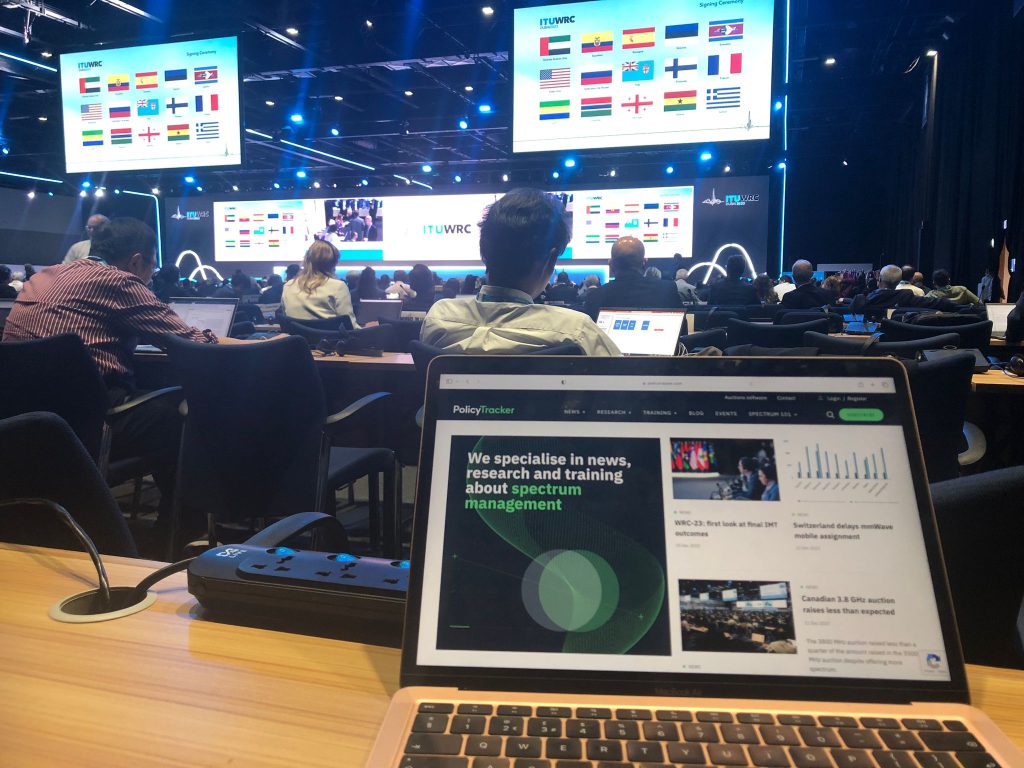The only journalist in Dubai for WRC-23 was from…
... PolicyTracker, as you might have guessed from our recent coverage!
For about a week you’ve been getting daily articles about WRC-23The World Radiocommunication Conference (W… outcomes and comments from industry representatives, working group chairs and heads of delegations. We have been busy talking to those in Dubai who were closely involved.
Why aren’t more people paying attention?
We are passionate about following this conference and take pride in summarising the newest regulations and arguments (both sides) as accurately as possible. These are important decisions for the ICT industry, for worldwide economic development and for global equity in information access.
It came as quite a surprise to find myself the only journalist in the ITUThe International Telecommunication U… media office during the final—and most important—week of WRC-23. This was not the case at previous WRCs. It may reflect current pressures on news organisations’ budgets.

Over 3,900 delegates from 163 ITU member states, including 88 ministerial-level participants, attended the four-week event. They approved 43 new resolutions, revised 56 existing ones, and suppressed 33 resolutions. The final acts were signed by a total of 151 member states.
Key decisions included:
- The modernisation of the global maritime distress and safety system (GMDSS), which will now use e-navigation systems to enhance distress and safety communications at sea.
- The recognition of the Chinese BeiDou satellite messaging service for GMDSS use. This means a highly controversial discussion between the West and China has finally been settled.
- The identification of spectrum for International Mobile TelecommunicationsInternational Mobile Telecommunications (I… (IMT), which is crucial for mobile services and will improve coverage and capacity of 4G, 5G and, in the future, 6G.
- The introduction of high-altitude platform stations as IMT base stations (HIBSHIBS or High Altitude IMT Base Stations ar…), a new mobile service that can provide coverage in hard-to-reach areas at a low cost and limited environmental impact.
- The identification of new frequency bands for non-geostationary fixed-satellite service Earth stations in motion (ESIMs). This will enable high-speed broadband onboard aircraft, vessels, trains, and vehicles and will be critical following disasters where local communication infrastructure has been damaged or destroyed.
In a nutshell: this conference matters, especially at a time when people are desperate to communicate and be connected, anytime and anywhere. And at a time when the geopolitical situation is about as unstable as my mobile provider’s service in the London underground. The WRC is a unique moment when countries find compromise and achieve global agreements that will affect the way we communicate for years to come.
So why aren’t more people paying attention? Perhaps it’s the fact that the far more mediatised COP28 was happening at the same time on the other side of the city. Perhaps it’s the fact that navigating the technicalities of the Radio Regulations requires a certain persistence and commitment. Or maybe you need a bigger-picture lens to see and report on the daily impact of those regulations.
It’s that perspective, persistence and commitment that our editorial team has pledged to maintain.
We are already looking forward to covering stories about the next study cycle leading up to WRC-27. But for now, we’re ready to grab some eggnog and recover from another fascinating conference.
